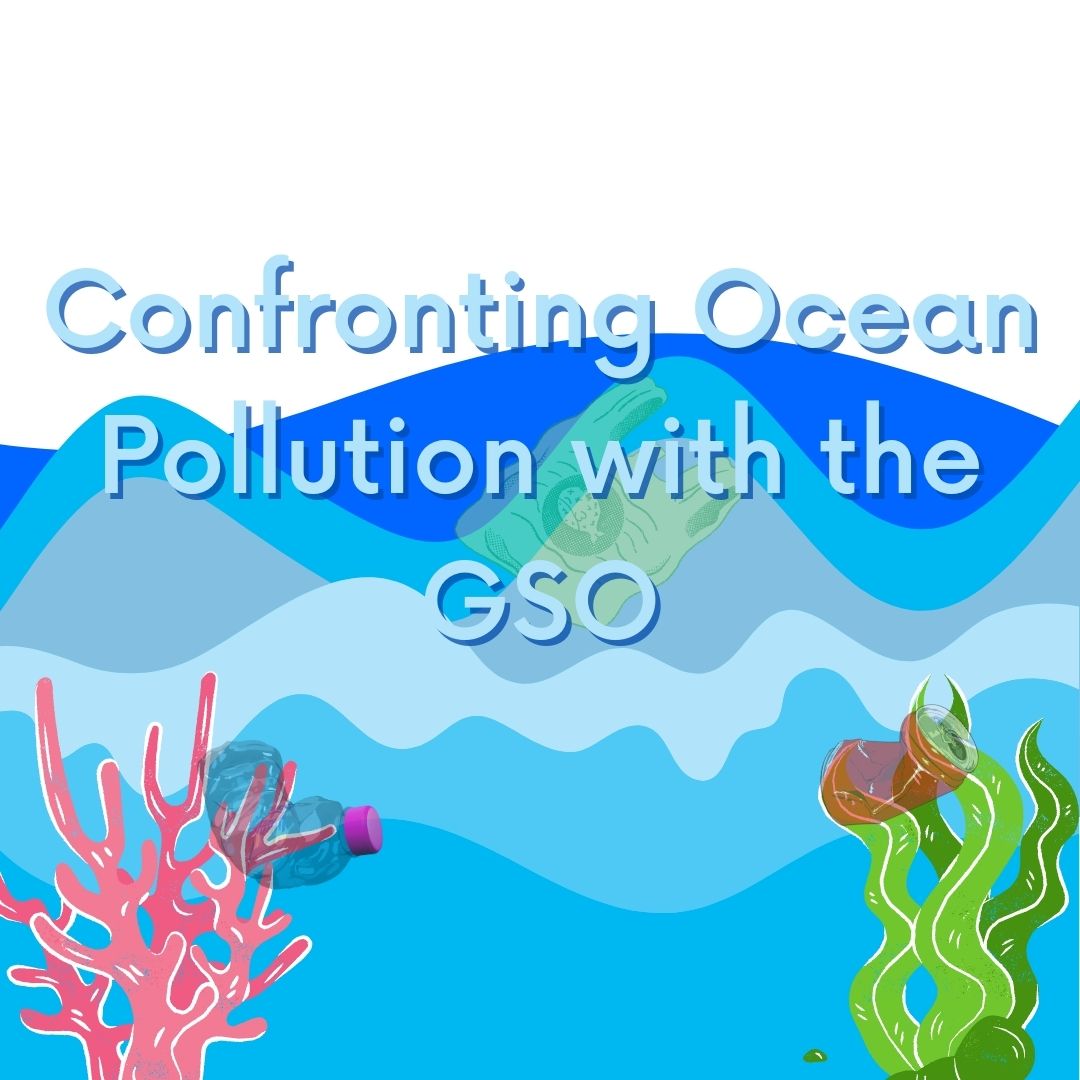Graduate School lecture discusses dangers of plastic pollution
The GSO’s “Confronting Ocean Pollution” lecture discusses how plastics and chemicals disrupt marine life. Illustration by: Maddie Bataille | Photo Editor
The University of Rhode Island’s Graduate School of Oceanography (GSO) discussed the dangers of plastic waste and forever chemicals in their lecture entitled “Confronting Ocean Pollution.”
Located at the University’s Narragansett Bay Campus in the Coastal Institute Auditorium, the lecture on Jan. 24 referenced data collected from several of the University’s campuses. The data used is part of URI’s “Plastics: Land to Sea” initiative, a research network aimed at developing solutions for plastic pollution, according to the University’s website.
By continuing the conversation about ocean pollution in relation to data collected in Providence and Narragansett, Coastal Resources Center director and GSO professor J.P. Walsh hopes to “champion change” and “put science into action.”
According to the lecture’s introductory statement, Walsh has conducted research around the world as a geological oceanographer – from Papua New Guinea to Antarctica. As stated in the Coastal Resources section of the University’s website, Walsh’s research focuses on analyzing coastal sedimentary processes, mainly on the investigation of how materials end up in the ocean.
Walsh explained that plastic may undergo a number of different marine systems depending on their density and composition, including the coupling of physical, chemical, biological and geological processes. When larger plastics gradually break down due to water and wave movement, ultraviolet radiation and other chemical processes, they become secondary microplastics, according to Walsh. These plastics, as Walsh discussed, never fully break down. Instead, they become potentially toxic chemicals.
Ocean-processed plastic damages marine life when both small and large animals attempt to ingest it, according to Walsh.
“Motivated a lot of concern and passion… but [the problem] goes beyond these big organisms,” Walsh said. “It’s the whole ecosystem, and of course, humans may ultimately be impacted.”
Between 90 and 99% of plastic in the ocean is unaccounted for, according to Walsh. Although scientists are still learning about the marine systems that break down plastic, URI’s “Plastics: Land to Sea” initiative hopes to “better understand” the plastic that has accumulated on the Narragansett Bay. According to the initiative’s website, they sample such materials in an attempt to “map plastic from shoreline to seafloor.”
As demonstrated by a graphic shown during the lecture, the amount of plastic particles is greatest on Narragansett Bay’s upper beach and dunes. However, Walsh noted how, as particle count decreases and particle density increases, the plastic concentration “doesn’t go to zero.”
During the second half of the lecture, Rainer Lohmann, professor of oceanography at the GSO and director of the URI Superfund Research Center, discussed the chemical side of the ocean’s plastic accumulation. Lohman explained how resistant chemicals such as per- and polyfluoroalkyl substances (PFAS) have impacts beyond marine life.
As director of URI’s Superfund Research Center program, entitled Sources, Transport, Exposure and Effects of PFAS (STEEP), Lohmann led the center’s fourth project in developing sampling approaches for PFAS pollutants. He also led his own research project involving detecting PFAS within STEEP.
In order to introduce lecture attendees to the concept of PFAS, known as “forever chemicals” because they cannot break down naturally in the environment, Lohmann summarized the Hollywood film “Dark Waters.” The film was inspired by the real-life story of Rob Bilott, a lawyer who discovered that the company DuPont had been secretly polluting a local community’s drinking water with a deadly chemical. This chemical was made using several PFAS.
Lohmann further explained that even though Bilott’s PFAS uncovering led to the phasing out of such materials by DuPont.
“It is not as if things just magically disappear,” Lohmann said. “We keep being exposed because there are so many products where this chemistry is used.”
As these “forever chemicals” go through wastewater treatment plants and are reused as fertilizers in fields, Lohmann said that they reemerge in the food we eat and the water we drink.
“Once you make chemicals or products that are really resistant, they don’t break down easily,” Lohmann said. “So we make these products by industry, we make wonderful products that have unique properties. Eventually we throw them away.”
By bringing awareness to the problem of plastic accumulation in oceans, Walsh and Lohmann hope to encourage the “simplification of chemicals.” That way, if these chemicals enter an uncontrolled environment, they will not cause further harm.
In response to a question regarding how to get rid of dangerous “forever chemicals,” Lohmann stated that incineration is the only current solution. Walsh explained that if we can control plastic accumulation in the ocean in some way, there could be a future for managing ocean pollution systems.
“I worry that in many places, we’re kind of getting used to this problem [of ocean plastics],” Walsh said. “You can see people just sort of living with reality. We need to shine a spotlight on the problem… and start thinking about the bigger picture.”The second event in the spring 2023 GSO Lecture Series entitled “Oceans Tell Stories Through People,” is scheduled for Tuesday, Feb. 7 from 5:30 p.m. to 7 p.m. The lecture will focus on storytelling, with more details to come on the GSO’s website.

